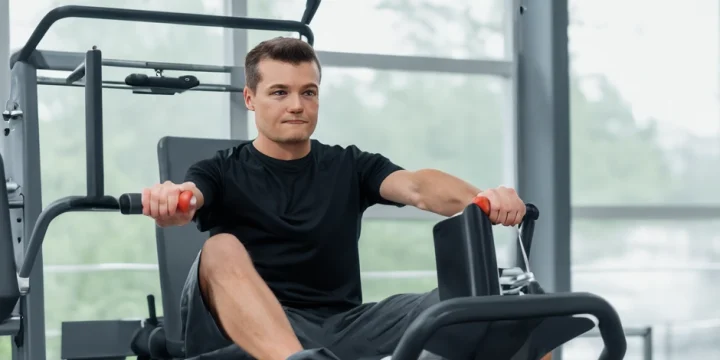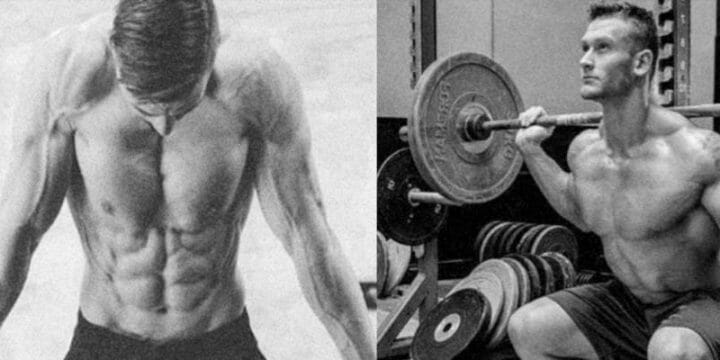You’re probably wondering whether calisthenics everyday is a good thing or a bit too much. I know I did too.
I am glad you've come here, and I will do my best to explain how you can do calisthenics every day and avoid rookie mistakes.
Calisthenics changed how I feel about my body and bodyweight exercises. I hope it will do the same for you.
But first, should you do calisthenics daily?
Quick Summary
- You can do calisthenics every day, but you should give your body enough time to rest and recover.
- Calisthenics is a form of resistance training that teaches you how to use your body weight to work out with almost no equipment.
- According to the National Institutes of Health, calisthenics can improve overall health through brief, frequent muscular contractions, highlighting its effectiveness as an exercise method.
- In my opinion, daily calisthenics seems like a highly beneficial and adaptable form of exercise, suitable for a wide range of fitness goals and levels.
Should I Do Calisthenics Every Day?
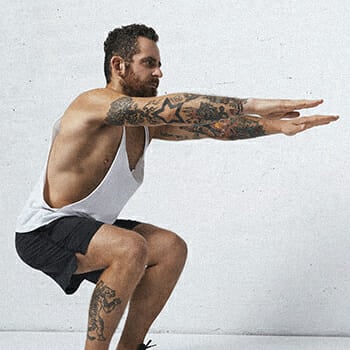
Yes, you can do calisthenics every day. But this doesn’t mean that you should train until failure - make sure to give your body time to rest.
When I first started with my calisthenics training workouts, I trained my whole body hard every day.
Big mistake!
I didn't know it at the time, but I had been putting too much stress on my muscles, joints, and connective tissue, which led to injuries.
If you want to build muscle mass, you need to have rest days or do split training.
A study from the National Institutes of Health (NIH) states that if you are considering incorporating calisthenics into your daily routine, there are a few considerations to take into account. While the potential benefits of this exercise method are numerous, there is also the possibility of injury or overexertion [1].
What Is Calisthenics?
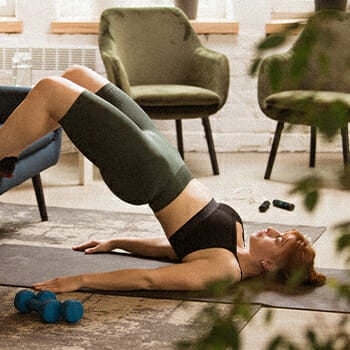
Calisthenics is a form of resistance training (or strength training, if you like) that teaches you how to use your body weight with almost no equipment.
According to a study published by the National Institutes of Health (NIH), calisthenics can be an effective way to break up your day by incorporating brief, frequent muscular contractions to improve your overall health [2].
This form of exercise can be done anywhere and does not require any equipment, making it an accessible way to increase energy expenditure, protect cardiovascular endothelial function, lower blood pressure, and improve postprandial glucose metabolism.
"It is an art form of using your own bodyweight as a means to maximize human power and athletic ability,"
- Tee Major, a U.S. Military Fitness Instructor & Author of Urban Calisthenics
Benefits of Daily Calisthenics

The progression of everyday exercising can do wonders for our body and mind. The point is to work on it as a solution that will help you achieve your goal.
If you work on calisthenics training as described in the previous section, meaning every day but at certain times focusing on a problem muscle group or groups, you should see many benefits and fast.
"I normally train six days a week and for about two hours each day."
The benefits of daily calisthenics are numerous, but just off the top of my head, I'd say:
- Improved physical health and mental health
- Muscles can learn to work together
- Increased body awareness
- Weight loss
- Improved balance and coordination
As for me, I like the feeling of power after a good calisthenics workout. It's overwhelming but in a good way. I'm in a better mood, my energy levels are up, and I laugh more. Thus I'm a better company for people around me, and my social life has improved.
That is the magic of calisthenics.
Calisthenics is a journey to well-being. It’s a good idea to go traveling every day.
Related Article: Do Calisthenics Burn Fat?
Calisthenics Exercises That You Can Do Every Day

I love this type of resistance training because you can choose different exercises for each workout. The combos are endless. You can experiment as much as you like.
Some exercises don't require much energy, and you can make progress fast. Some are demanding and tough, but the rewards are all the greater.
You can do calisthenics workouts entirely without equipment, and here are some of the usual suspects. Some I use, and some I avoid.
Here is a simple calisthenics every day plan that you can follow or easily modify depending on your fitness level:
Monday: Legs
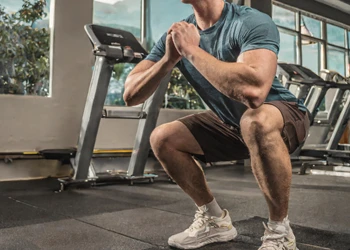
- 30 squats
- 15 single leg deadlifts
- 30 single leg calf raises
- 30 sumo-squats
- 20 alternating lunges
- 15 side lunges
Tuesday: Triceps, Biceps, Shoulders, and Chest

- 20 pullups
- 20 chest dips
- 20 dips on a straight bar
- 20 incline push-ups
- 8 push-ups
- 1-minute plank
Wednesday: Abs
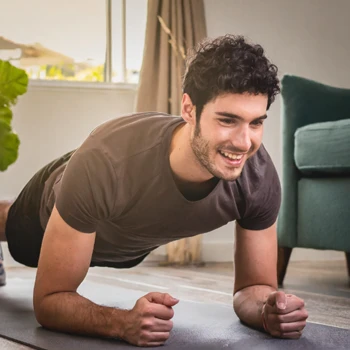
- 20 crunches
- 20 leg raises
- 20 oblique crunches
- 20 flutter kicks
- 1-minute plank
Thursday: Cardio
- 30 minutes of yoga or a jog
Friday: Full Body Workout
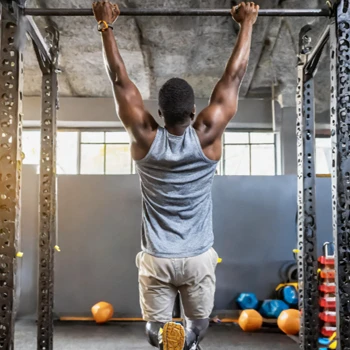
- 10 pullups
- 10 chin-ups
- 20 dips
- 25 jump squats
- 20 push-ups
- 50 crunches
- 10 burpees
- 30 seconds jumping rope
- 1-minute plank
Saturday: Rest and Recovery
Sunday: Abs
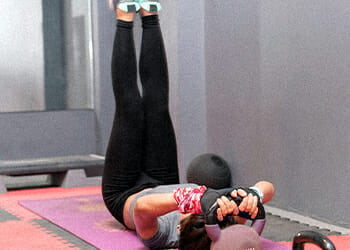
- 20 crunches
- 20 leg raises
- 20 oblique crunches
- 20 flutter kicks
- 1-minute plank
Exercises To Avoid

While there are tons of exercises you can do daily, you also have to be mindful of some that might do more harm than good.
I suggest you avoid the following especially if you’re just starting out with your calisthenics workout.
These require advanced skills, thus might not be the best option for beginners.
- Plyo push ups
- Neck pull-ups
- Back to wall hspu
- Bench/chair dips
Equipment Needed

Every athlete intent on resistance training will sooner or later come to the gym.
Gym machines and other equipment can come in handy for calisthenics routines that require more intensity, so maybe it's not a bad way to consider a gym membership.
Pull-up bar
I use pull-up bars to practice pull-ups, leg raises, and chin-ups. I can't imagine exercise workouts without them.
Resistance bands
I use them to increase resistance and build strength. If doing calisthenics every day isn't enough and you're not building strength as fast as you would have hoped, purchase some resistance bands and continue your exercises with them.
Try training every day or 5-6 days a week, and the results should become apparent in no time.
Free weights
Generally, there are no rules on the use of weights but if your body weight is no longer enough for you, and your muscles want to go the extra mile, start using free weights such as dumbbells, kettlebells, or barbells.. Lifting weights is a frequent complement to calisthenics.
Check out our article on the best calisthenics equipment you can buy.
Tips for Beginners

Hire A Coach
If you're a calisthenics beginner, I would recommend someone like a fitness coach or a gym buddy with more experience who would show you proper calisthenics movements so that you can avoid injury, improve your range of motion and meet your goal.
After you have mastered each tricky movement, you should be able to do the routine, even when alone.
Choose to go to the gym at least a few times a week.
If you are a calisthenics beginner, being part of a community can help you get into a routine and make it more difficult for you to quit.
Consistency rules and the people at the gym make each other feel like a family. You’ll find yourself not wanting to let them down. There you can ask questions, get help, and have fun in the process.
Check out our article on the ultimate calisthenics guide for beginners.
Have a Strategy

Based on my first-hand experience, having a structured plan is crucial when starting calisthenics.
As you build up muscle strength, your flexibility improves, and you'll be able to challenge your workload and build up your custom-made routine movement.
In time, you’ll improve your form and add more challenging exercises to your routine.
Eat Right
Watch your macros and amount of water intake. Give your body the fuel it needs to accomplish the feats it needs to do. A muscle can only do so much work.
Any bodyweight exercise you intend to do depends on following a healthy nutrition plan that includes lean proteins, healthy fats, and complex carbs.
When Will I See Results?

It depends on what results you expect.
In terms of mental health, you can expect an almost immediate surge of feel-good emotions. Starting something new always feels amazing, and it only goes up from there.
As for your body, think about long-term goals.
Even a month of calisthenics training can feel huge. Changes are so obvious, that I didn't even need to use the before-after photos. My muscle tone improved, and so did my metabolism, strength, and stamina.
Related Article: Can You Lift Weights Everyday?
References:
- www.ncbi.nlm.nih.gov/pmc/articles/PMC10225133/
- www.ncbi.nlm.nih.gov/pmc/articles/PMC9653850/
About The Author
You May Also Like




